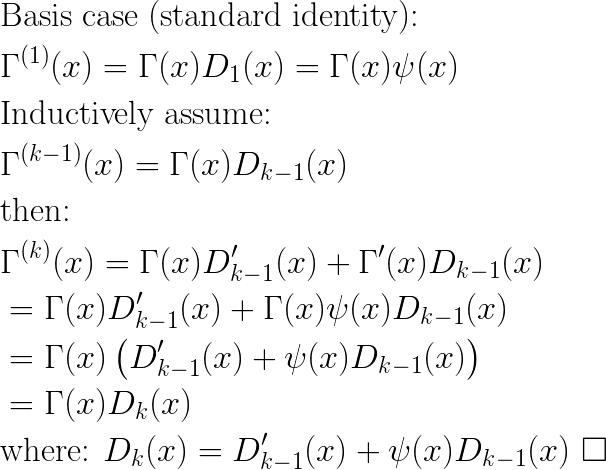Computing Derivatives of the Gamma Function
In this post I’ll describe a simple algorithm to compute the kth derivatives of the Gamma function.
I’ll start by showing a simple recursion relation for these derivatives, and then gives its derivation. The kth derivative of Gamma(x) can be computed as follows:

The recursive formula for the Dk functions has an easy inductive proof:

Computing the next value Dk requires knowledge of Dk-1 but also derivative D’k-1. If we start expanding terms, we see the following:

Continuing the process above it is not hard to see that we can continue expanding until we are left only with terms of
What we want, to do these computations systematically, is a formula for computing the nth derivative of a term

Generalizing from the above, we see that the formula for the nth derivative is:

We are now in a position to fill in the triangular table of values, culminating in the value of

As previously mentioned, the basis row of values